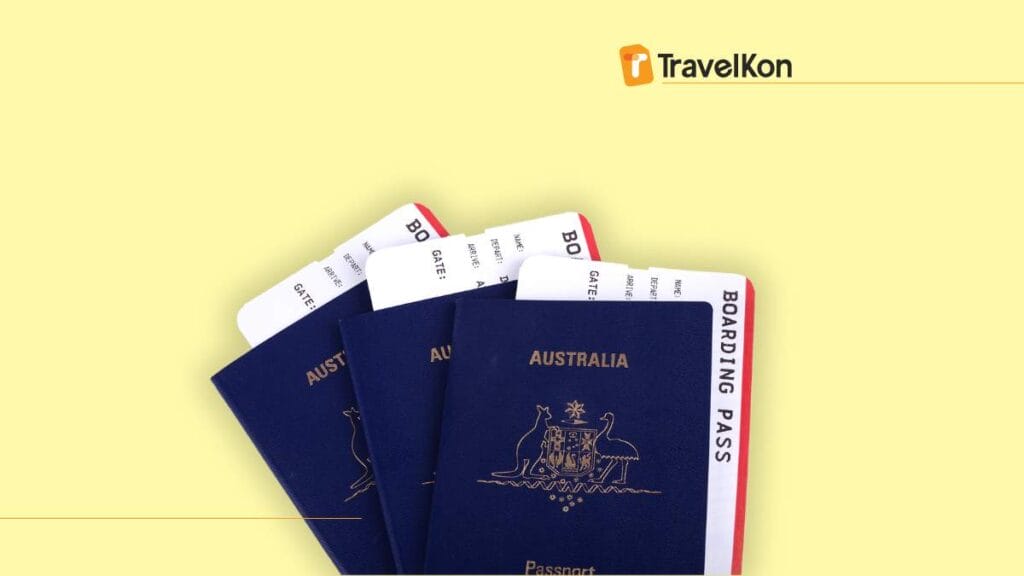If you’re an Australian planning a European adventure, the question “Do I need a visa for Europe from Australia?” is crucial. Many travelers from Australia can benefit from visa-free travel to much of Europe, especially the Schengen Area, for short stays. However, recent updates like the new ETIAS travel authorization system have added steps to the process. This article dives into the most commonly asked questions by Australians about visa requirements, travel authorizations, and entry conditions to Europe — all designed to help you travel confidently and smoothly.

Top Choice eSIM Unlimited Data with coverage Europe countries: Austria, Belgium, Bulgaria, Croatia, Cyprus, Czech Republic, Denmark, Estonia, Finland, France, Germany, Greece, Hungary, Iceland, Ireland, Italy, Latvia, Liechtenstein, Lithuania, Luxembourg, Malta, Netherlands, Norway, Poland, Portugal, Romania, San Marino, Slovakia, Slovenia, Spain, Sweden, Switzerland, Turkey, United Kingdom, Vatican City
What Are the Current Visa Requirements for Australians Traveling to Europe?
Australians can generally enjoy visa-free entry to the Schengen Area countries for stays up to 90 days within any 180-day period, primarily for tourism, business, or family visits. A valid passport, which must be valid for at least three months beyond your intended departure from Europe, is essential. The Schengen Area covers 29 countries, including popular destinations like France, Italy, Spain, and Germany. Importantly, though no traditional visa is needed for short stays, travelers must still comply with border checks and may need to show proof of onward travel or sufficient funds.
Traveling last summer, I remember breezing through customs in Paris with just my passport and travel itinerary, highlighting how straightforward this process is under the visa exemption rules. So, Do I need a visa for Europe from Australia?
Travel Essentials Checklist for Visa-Free Entry
- Valid passport for at least 3 months after departure
- Proof of onward or return travel
- Reason for visit: tourism, business, or family
- Financial means to support stay
- Compliance with Schengen 90/180-day rule
- Travel insurance recommended
What Is ETIAS and How Does It Affect Australian Travelers?
Starting mid-2025, Australian travelers to Schengen countries must apply for the European Travel Information and Authorization System (ETIAS) before their visit. ETIAS is an electronic travel authorization designed to improve security by pre-screening visitors from visa-exempt countries. This process requires submitting an online application with passport details, traveler information, and security questions, supported by a valid email and a credit/debit card for a small processing fee. ETIAS approval lasts for three years or until the passport expires, simplifying multiple trips within that period.
During preparation for a recent trip, I submitted my ETIAS application online in minutes, receiving approval quickly, which brought peace of mind for my upcoming travels.
ETIAS Application Requirements
- Passport valid for the trip
- Active email address for notifications
- Debit or credit card for fee payment
- Completion of online application with security questions
- Approval typically received quickly
How Can I Calculate My Visa-Free Days in Europe?
Understanding the Schengen 90/180-day rule is essential to avoid overstaying. The rule allows Australians to stay in the Schengen Area for a total of 90 days within any rolling 180-day period, meaning your time in Europe is counted backward from each day of your stay. For example, if your trip involves multiple entries or travel outside the Schengen Area, each day counts toward your 90-day allowance. Online calculators provided by the European Commission help travelers track these days to plan accordingly.
Once, I mistakenly underestimated my days in the Schengen zone, which led me to use an official calculator tool that helped me realign my travel plans and avoid penalties. So, Do I need a visa for Europe from Australia?
Practical Steps to Track Visa-Free Days
- Use official Schengen Day Calculator tools online
- Keep travel dates documented
- Monitor entry and exit stamps in your passport
- Plan travel to non-Schengen countries strategically
- Avoid consecutive stays exceeding 90 days
What Are Typical Entry Requirements Beyond Visas for Australian Travelers?
Besides visa or ETIAS, travelers must meet standard border entry requirements including the presentation of a valid passport, possibly proof of onward travel, and showing financial means for the stay. Border officials have the final say whether to admit travelers. Having documents like accommodation reservations, travel insurance, and return tickets can ease entry. It’s also advisable to be aware of any travel restrictions or alerts against certain regions due to health or security concerns, and check these before departure.
On one trip, being prepared with printed hotel confirmations and travel insurance gave me confidence at customs and helped smooth entry procedures. So, Do I need a visa for Europe from Australia?
Key Entry Checklist for European Borders
- Valid passport and travel documents
- Proof of accommodation and return/onward tickets
- Financial proof (cash, cards)
- Travel insurance covering medical emergencies
- Awareness of current travel advisories
Where Can Australians Find Official Information and Assistance for Their European Travel Visa Needs?
Australians planning to travel to Europe can find up-to-date information on visa and travel requirements from official government sources like the Australian Department of Foreign Affairs and Trade (Smartraveller) and the EU’s official ETIAS site. Travel insurance providers, consular services, and visa assistance companies also offer valuable help for securing required documents and understanding regulations. Having reliable sources ensures you stay informed about any changes, including sudden border policies or safety advice, essential for stress-free travel planning.
On my last trip, the Australian government’s Smartraveller website was my go-to resource for the latest updates, giving me confidence that my travel plans were fully compliant.
Top Resources for Visa and Travel Information
- Australian Government SmartTraveller
- European Union ETIAS Website
- Department of Foreign Affairs and Trade Assistance
- Travel insurance providers with ETIAS coverage options
- Visa and travel assistance agencies




